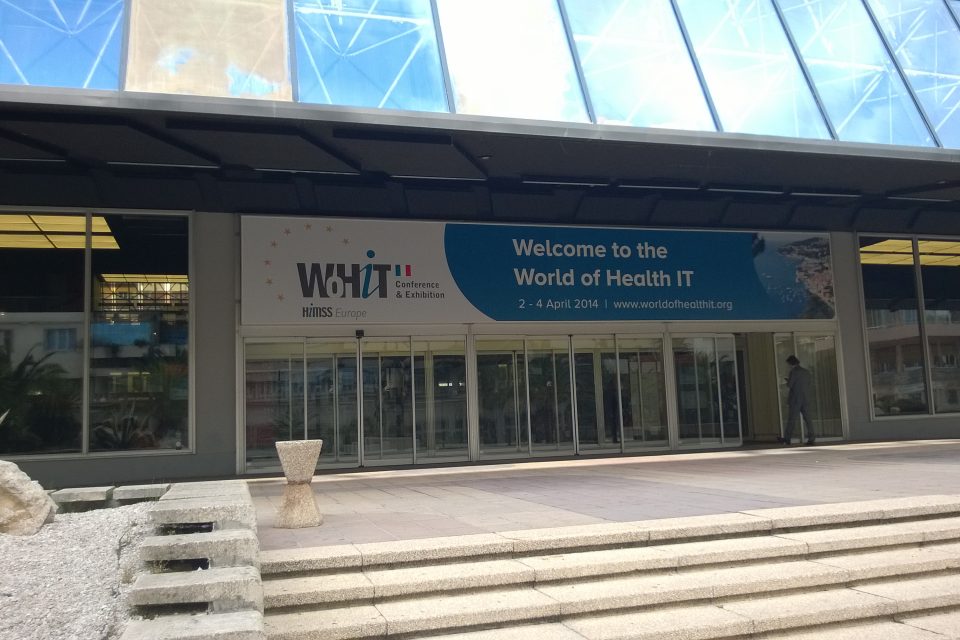By
The HIMMS Europe World of Health IT (WoHIT) conference and exhibition has just taken place in Nice, France and I was excited to see so many Microsoft partners there to showcase solutions and devices to improve productivity and collaboration, mobility and health analytics. It was also very encouraging to see the growing influence Windows 8.1 and Office 365 on a range of devices helping to bring apps, services and solutions right to where the clinician needs to be.
As in previous years, mobility was a key theme in WoHIT but now all can see that through cloud connected devices and the growing range of apps available to health workers and clinicians, the promise is turning into a reality. Satya Nadella, Microsoft’s CEO, recently emphasized the Microsoft vision for the cloud to deliver the best cloud-connected experience on every device or in short – “a cloud for everyone, on every device.” We are seeing this come to life in health and demonstrated at WoHIT.
During a Microsoft and HIMSS hosted dinner debate with 60+ customers and partners, we shared experiences of cloud innovation in health, particularly around the “vital” value of Microsoft Azure. It was exciting to hear from Andrea Pescino, the CEO of SoftJam on how they are supporting Italian hospitals in their move to Azure to support storage scenarios for data including DICOM medical files, as well as scenarios for disaster recovery and business continuity. Andrea summarizes this transition very clearly, “We are seeing an increasing number of health organizations relying on the Microsoft Azure platform as an accelerator for their internal innovation… from cost savings to freeing up key resources and enabling capabilities to maximize organizational impact”. It is the beginning of an exciting and empowering cloud journey.
James Batchelor at Southampton University also gave a strong reminder of the huge potential of using Azure for advancing genomics research and personalized medicine. Even in France, where there is more reluctance in embracing public cloud, Phast is leveraging cloud for coding of drugs and medical devices. Phast is a non-profit standardization health care association which has an installed base of four hundred health care facilities (mostly public hospitals) to promote the correct management and distribution of medication and medical devices terminologies, while projecting to expand to codifications used in the whole healthcare sector.
As WoHIT was taking place in Nice, Microsoft, Dell and ConnexxaLife launched Galileo iClinic – the mobile and cloud ready electronic patient record App. This new Windows 8.1 App empowers clinicians to view, add, update, diagnose and manage clinical activities and vital signs.
These and many more examples of cloud innovation and adoption in health, show that when we adopt a “can do” attitude for cloud in health, we make substantial progress. This is surely true in the Netherlands where we have several key references of how Dutch social services organisations leverage Microsoft Office 365 to do more, enabling care workers and organizations to achieve greater productivity and collaboration or improve returns on their EMR investment through integration of Office tools such as Lync for communication and collaboration. Traveling clinicians such as doctors and nurses need scheduling, location services, analytics and productivity tools so that they aren’t tied to their desks. Office 365 is providing solutions here, in short, taking productivity to the patient and citizen, where it’s needed most.
Helse Vest, a Norwegian regional health authority has found a way using Office 365 to more quickly create reports based on surgery trends and other medical data. They implemented Power BI for Office 365, a cloud-based business intelligence (BI) solution that has helped reduce the time to build reports from 14 days to less than 1 day! An amazing saving of valuable time and resources.
To achieve these productivity, collaboration and mobility gains you have to use the right apps and data sources accessible on the appropriate cloud infrastructure to support the health workers and clinicians to do their work together wherever they are having the right insights for future proof decision making processes.
To help their clinicians improve services, Leeds Teaching Hospitals wanted to gain rapid insight into large volumes of data from multiple sources to identify trends and improve services. Ascribe and Two10Degrees designed an end-to-end Big Data solution with business intelligence tools based on Microsoft SQL Server 2012 and Windows Azure.
Microsoft partners such as Ascribe and Two10degrees are adopting the Microsoft Cloud platform for their applications. Another Microsoft partner, McKesson, at WoHIT, wanted to offer their analytics application to organizations of any size, so they chose the Windows Azure platform. As a result, McKesson can serve virtually all of its customers with a single sign-on solution and platform, and its customers can benefit from healthcare analytics without additional on-premises infrastructure.
Microsoft technologies and partners’ solutions are delivering mobility, productivity and collaboration, analytics and the datacenter solutions to make a real impact for better health. Stay tuned for more transformation, it will be cloud first and mobile first!




